Latest Special Collections’ Exhibition, “All the Year Round: Exploring the Nineteenth-Century Periodical”
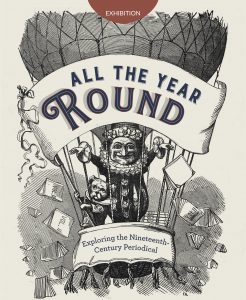 The latest exhibition of the wonders of the University’s Special Collections opened last week and will be on display until 31 August.
The latest exhibition of the wonders of the University’s Special Collections opened last week and will be on display until 31 August.
All the Year Round: Exploring the Nineteenth-Century Periodical tells the story of the rise of the British periodical. The exhibition charts the rapid expansion of periodical publication from the early years of the nineteenth century, when writers like Lord Byron and John Keats were reviewed and reviled, to the last decades of Queen Victoria’s reign, when ‘decadent’ journals caused controversy, the Boy’s Own and Girl’s Own Paper catered to an expanding young readership, and Sherlock Holmes’s appearance in The Strand inspired a devoted following across all classes.
All the Year Round takes its title from Charles Dickens’s weekly journal, which reached tens of thousands of readers and featured many of his now classic novels. The exhibition’s strongest presence comes from the satirical London journal Punch, whose columns and cartoons mocked prominent politicians and celebrities and shaped middle-class attitudes. Colonial spinoffs, like Otago Punch, soon spread across the British Empire.
While the exhibition primarily features holdings from the University of Otago’s Special Collections and the Hocken Library, it also includes works kindly lent from the Dunedin Public Library and the Olga and Marcus Fitchett Collection.
Jane Austen talk this Friday, Burns 2, 4 pm
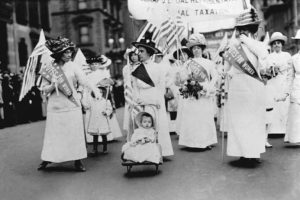 Although not strictly a Centre for the Book event, we know Jane Austen events have been popular in the past, so I’m posting this one. The Department of English and Linguistics is pleased to welcome Professor Sheryl Craig of Central Missouri University to speak about “Jane Austen and the Women’s Rights Movement in Georgian England.” Professor Craig is a member of both the English and Philosophy Departments at Central Missouri and is the author of author of Jane Austen and the State of the Nation (2015). Here is how she describes her topic:
Although not strictly a Centre for the Book event, we know Jane Austen events have been popular in the past, so I’m posting this one. The Department of English and Linguistics is pleased to welcome Professor Sheryl Craig of Central Missouri University to speak about “Jane Austen and the Women’s Rights Movement in Georgian England.” Professor Craig is a member of both the English and Philosophy Departments at Central Missouri and is the author of author of Jane Austen and the State of the Nation (2015). Here is how she describes her topic:
“Jane Austen was 17 years old when A Vindication of the Rights of Woman was published, and the legal, financial, and educational inequalities Mary Wollstonecraft identified directly affected Jane Austen. It is, therefore, not surprising to find Austen’s fictional characters discussing women’s rights talking points. Unfortunately, modern readers, even twenty-first century feminists, may not fully appreciate the impediments Austen’s characters are struggling to overcome or the women’s rights’ positions they defend.”
We hope you can join us.
2018 Symposium Call for Papers
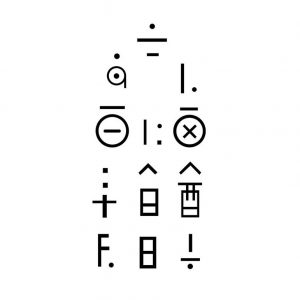 At long last, here are the details for this year’s symposium, to be held 1–2 November. The attached PDF gives full details, so feel free to download it and broadcast widely. I’ll be taking copies to SHARP in Sydney next month.
At long last, here are the details for this year’s symposium, to be held 1–2 November. The attached PDF gives full details, so feel free to download it and broadcast widely. I’ll be taking copies to SHARP in Sydney next month.
The thems is “Translation and Transculturation in, through, and by Print.” Relevant topics might include, but are not limited to:
- The impact of print in NZ in languages other than English
- The impact of print in scripts other than the Roman alphabet
- Collectors and collecting across cultures
- How books travel from one language to another
- Whether transculturation is separable from translation, e. can ideas travel irrespective of language?
- The extent to which print communicates across cultures more or less effectively than other media
- The effects of national language policies on the power of translation
- Any aspect of technologies for cross-cultural printing and/or translating
- The extent to which print records or distorts cross-cultural encounters
- Motivations for translation (evangelisation, education, propaganda, support)
- Whether translation inhibits or facilitates transculturation
Abstracts are due by 1 September, so put on your thinking caps. We look forward to a lively occasion, as usual.
Donald Kerr on Dueling in NZ
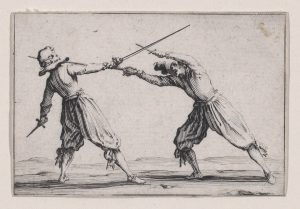 Our very own Co-Director, Dr. Donald Kerr, was interviewed yesterday on Radio NZ. Well worth a listen for a little-known aspect of NZ history. Congratulations to Donald on his recognition.
Our very own Co-Director, Dr. Donald Kerr, was interviewed yesterday on Radio NZ. Well worth a listen for a little-known aspect of NZ history. Congratulations to Donald on his recognition.
Book Night NZ, Tuesday 22 May, 5:30 pm at Dunedin Public Library
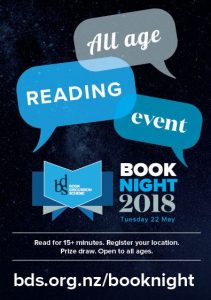 Please join book-minded types from throughout Dunedin to admire some of the many productions that make Dunedin a UNESCO City of Literature. There will be readings from the City of Literature books on display, as well as time to enjoy reading a selection or two silently.
Please join book-minded types from throughout Dunedin to admire some of the many productions that make Dunedin a UNESCO City of Literature. There will be readings from the City of Literature books on display, as well as time to enjoy reading a selection or two silently.
The festivities will kick off at 5:30 on the fourth floor and continue as long as readers are keen. The library closes at 8, so there is a definite terminus, though all are welcome to come and go any time during the event.
Thanks to the indefatigable Kay Mercer for organising this occasion. We’ve attached a PDF poster with full details. We hope you can join us.
150 Māori Books, this coming Thursday, 3 May, at noon
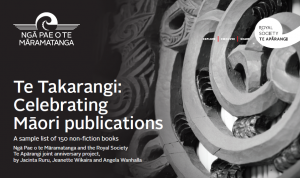 Please join us in the Hocken Seminar Room at noon next Thursday for a panel discussion by Jacinta Ruru, Jeanette Wikaira and Angela Wanhalla on “The Origins and Intent for Celebrating 150 Māori Non-Fiction Books” Part of a larger project, Te Takarangi: Celebrating Māori publications, the aim is to highlight one non-fiction book per day for 150 days starting on 13 February and ending in September this year to coincide with Te Taura Whiri i te Reo Māori | Te Wiki o te Reo Māori – Māori Language Week.
Please join us in the Hocken Seminar Room at noon next Thursday for a panel discussion by Jacinta Ruru, Jeanette Wikaira and Angela Wanhalla on “The Origins and Intent for Celebrating 150 Māori Non-Fiction Books” Part of a larger project, Te Takarangi: Celebrating Māori publications, the aim is to highlight one non-fiction book per day for 150 days starting on 13 February and ending in September this year to coincide with Te Taura Whiri i te Reo Māori | Te Wiki o te Reo Māori – Māori Language Week.
The Centre for the Book is always interested in how people perceive what books do in the world, and this seminar provides an ideal opportunity to hear from three very thoughtful scholars on the place of books in 21st-c bicultural Aotearoa.
For more information on the project, see Te Takarangi, https://royalsociety.org.nz/tetakarangi.
Public Lecture, Ryan Cordell on “Speculative Bibliography,” 23 April, 5:30 pm in Burns 5
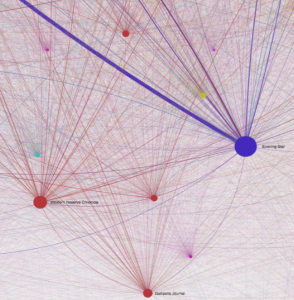 Come find out what happens as bibliography moves into the 21st century and encounters mass digitisation. Professor Cordell, author of the essay, “‘Q i-jtb the Raven’: Taking Dirty OCR Seriously” in the most recent volume of Book History, is a leading investigator of the advantages and challenges of digital sources.
Come find out what happens as bibliography moves into the 21st century and encounters mass digitisation. Professor Cordell, author of the essay, “‘Q i-jtb the Raven’: Taking Dirty OCR Seriously” in the most recent volume of Book History, is a leading investigator of the advantages and challenges of digital sources.
Here’s how Ryan explains his lecture:
“Scholars are outlining methods for describing the provenance and material-technical structures of mass-digitized texts. Computational methods help scholars trace textual structures largely outside the purview of traditional bibliography, such as the reprinted newspaper snippets we study in the Viral Texts Project (viraltexts.org). The clusters of matching texts output by our algorithm are, in a sense, enumerative bibliographies: each cluster lists witnesses of a given text, along with the metadata (e.g. date, title) of the newspapers that reprinted it.
But not quite. Really, each cluster lists texts similar enough under our algorithm’s constraints, which shift as we alter parameters such as the length, number, or overlap of matching strings required for texts to match. Resulting clusters are generally reliable as witnesses, but there are inevitably false positives and false negatives (e.g. OCR error). Moreover, clusters include types of repetition beyond witnesses, such as extended quotations of one text within another. Given that our algorithm outputs millions of individual clusters—each comprising between two and several hundred matched texts—we will never have the funding or hours to check even a fraction.
This paper proposes “speculative bibliography” as an interpretive frame for understanding the objects created through computational, statistical, and probabilistic methods such as those described above or, to cite a more common example, the results of keyword searches. Beginning with Tanselle’s proposed definition of the electronic edition as “all copies resulting from a *single job of typographical composition*,” the paper will propose the speculative edition: all texts associated through a single computational process. Beyond naming existing practices, the paper will argue that conscious engagement with speculative editions will be increasingly necessary for grounding meaningful exploration amid conditions of mass digitization.”
5:30 pm Monday, 23 April, Burns 5 of the Arts Building, University of Otago
Hazel Wilkinson speaks on “The Digital Life of Decorated Books,” 5.30 p.m., Wednesday 28 March
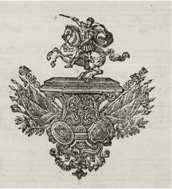 Come and hear Dr Hazel Wilkinson describe her work on “The Digital Life of Decorated Books” at 5.30 p.m. on Wednesday 28 March in Burns 5 on the ground floor of the Arts Building.
Come and hear Dr Hazel Wilkinson describe her work on “The Digital Life of Decorated Books” at 5.30 p.m. on Wednesday 28 March in Burns 5 on the ground floor of the Arts Building.
Dr Wilkinson, from the Department of English, University of Birmingham, is a scholar of eighteenth-century literature and print history and Principal Investigator on Fleuron. Fleuron (@Fleuronweb) is an open access database of eighteenth-century printers’ ornaments. It allows users to explore the history of print and publishing through the decorative elements used to adorn books of this period.
She has kindly provided the following summary and abstract:
Summary: This talk is about printers’ ornaments, the images made from inked wood- or metal-cut designs that regularly decorated printed books in the hand-press period. The talk will introduce an online database of printers’ ornaments, and discuss the growing importance of printers’ ornaments in literary studies and related fields.
Abstract: In 2016, ‘Fleuron’, a database of c.1.5 million eighteenth-century printers’ ornaments and related images, was launched online at fleuron.lib.cam.ac.uk. This talk will begin by describing how ‘Fleuron’ was created, with an introduction to the digital methods behind the database (accessible to non-specialists). ‘Fleuron’ was originally built as a tool for bibliographers, particularly those working in the field of printer identification. The talk will show how printers’ ornaments can be used to identify unknown printers, and will address the advantages and pitfalls of doing this kind of work digitally. It will outline plans for the project’s future, including the use of computer vision and machine learning. Beyond its bibliographical applications, ‘Fleuron’ is an exciting tool for the history of art and design: printers’ ornaments are miniature works of art that have been sorely neglected, perhaps because they have fallen through the conceptual gap between “text” and “illustration”. The talk will conclude with a discussion of the conceptual difficulty posed by ornaments. How do we distinguish between the illustrative and the decorative? What roles might ornaments have played in the interpretation of hand-press period texts at their first appearance? How can we “read” printers’ ornaments? The visual turn in literary studies is leading textual editors to ask these sorts of questions, and we are beginning to feel the need for an interpretative vocabulary for ornaments, for both research and teaching. The creative use of digital tools will be integral to the shaping of this new critical vocabulary.
Keith Maslen, an Honorary Fellow of the Department of English and Linguistics here, is one of the top bibliographers to have studied ornaments for handpress printer identification, so it is a great pleasure to be able to hear from Dr. Wilkinson about where the future of such scholarship might lead.
A Middle Eastern Odyssey: Constantinople to Palmyra
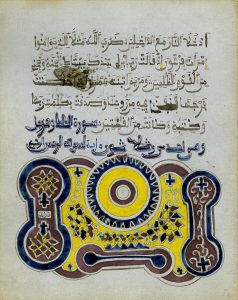
The latest Special Collections Exhibition opens today. It was inspired by an inventory of Middle Eastern and Islamic language materials that was recently compiled by Dr Majid Daneshgar, former lecturer at Theology and Religion at the University of Otago, now the University of Freiburg, Germany. Arabic, Persian, and Turkish books and manuscripts are on display, mainly from the collection of the Rev. William Arderne Shoults (1839-1887). Some of the printed books are scarce; the manuscripts unique. There are a few modern publications in the exhibition. These are mainly from the library of Charles Brasch (1903-1973), who was an archaeological field assistant at Tell el Amarna, Egypt, from 1933 to 1935.
Choice travel and history books are also on display that not only help contextualise the language-based items, but also convey a wider picture and greater understanding on this area of the world. Importantly, the exhibition has a largely historical focus, with items displayed grounded in a past stretching back to antiquity.
Some of the items on display include editions of George Sandys’s A Relation of a Journey begun An: Dom: 1610 (1615; 1632); David Roberts’ superb The Holy Land, Syria, Idumea, Arabia, Egypt & Nubia (1856); Thomas Erpenius’s early Arabic grammar entitled Rudimenta Linguae Arabicae (1628); a first edition of William Jones’s A Grammar of the Persian Language (1771); Robert Wood’s stupendous The Ruins of Palmyra, otherwise Tedmor, in the Desart (1753); Charles M. Doughty’s Travels in Arabia Deserta (1933); and T.E. Lawrence’s Seven Pillars of Wisdom (1935). Language materials include a unique Qur’an (c.1846); a unique manuscript of Euclid’s Elements i n Arabic (c.1800); an Arabic Bible printed in Newcastle-upon-Tyne (1811); a Hebrew Bible printed c.1611; and Arthur Lumley Davids’s A Grammar of the Turkish Language (1832).
The exhibition runs to 1 June 2018.
Hours: 830am to 500pm, Monday to Friday
Regent Book Art Competition–Put your Bookish Insights on Display
This event looked too irresistible not to draw readers’ attention to it. Deadline is 31 May and full details and application forms are available online from http://www.regenttheatre.co.nz/show_event/books-as-art/. And even if you don’t create a piece yourself, you may well wish to go along and purchase one, on Friday 8 June.
